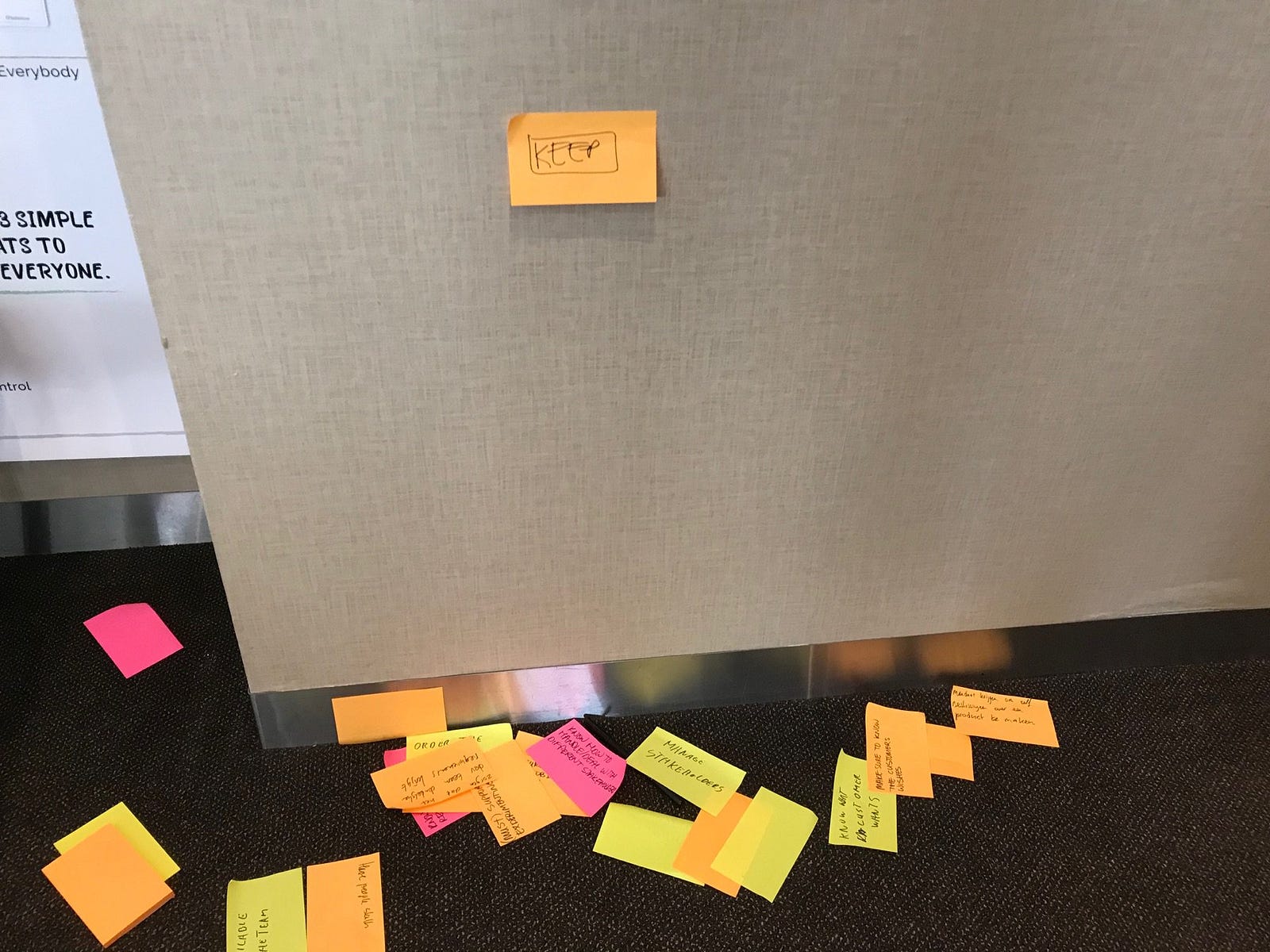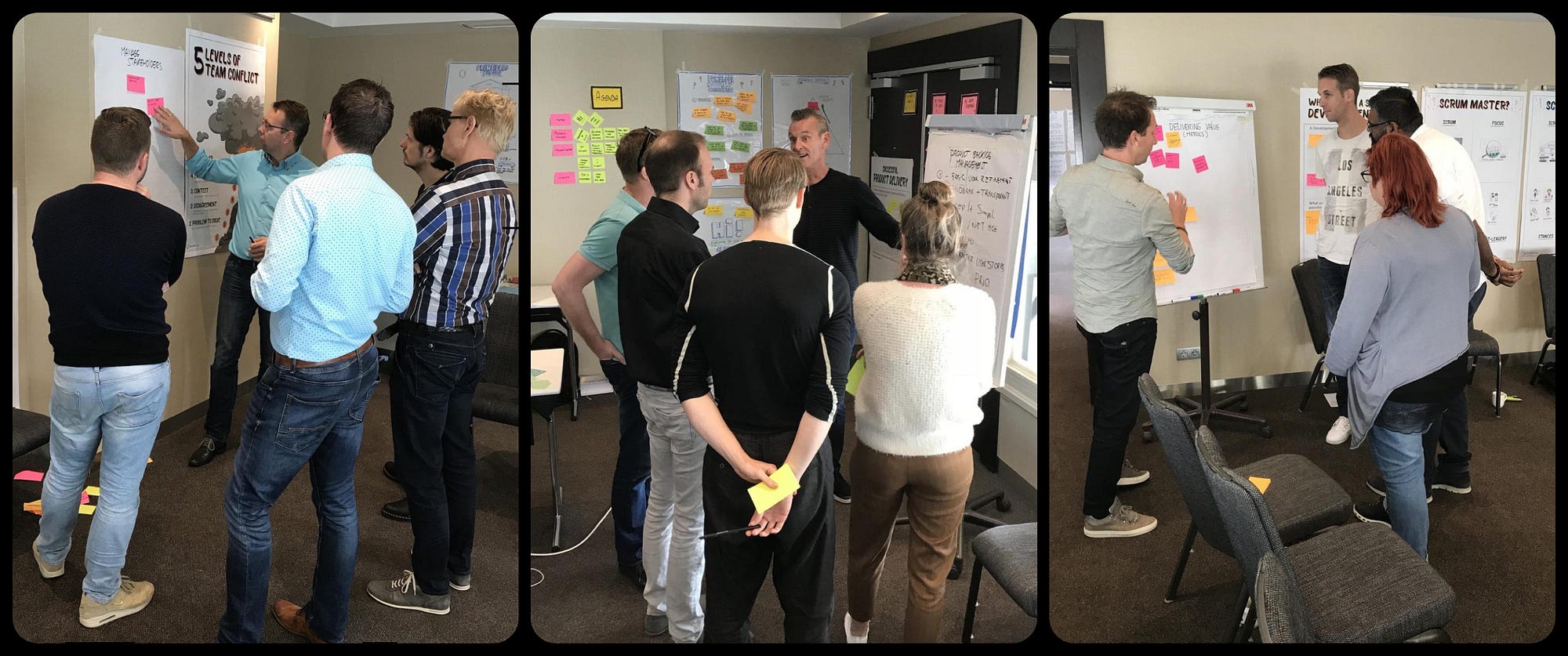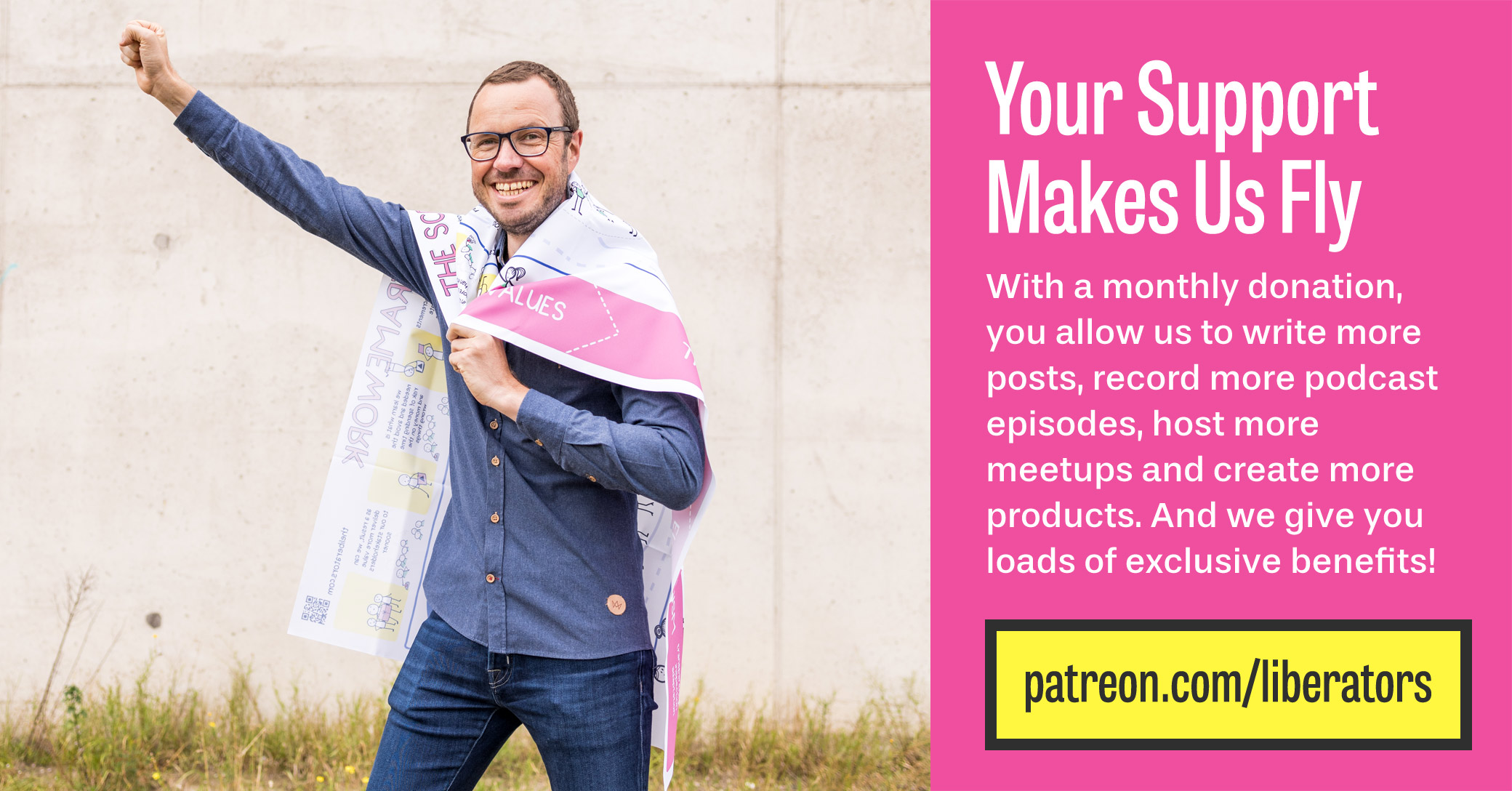Shift & Share is a Liberating Structure that helps spread novelty across groups and functions. Innovators showcase their ideas or products and gather meaningful feedback in short cycles. In one hour or less it’s possible to include everyone in a large group and make every voice heard in a structured, constructive way.
In an earlier blog post we described how you can use Shift & Share for…
- Scrum teams to showcase their product increments during multi-team Sprint Reviews;
- To gather meaningful feedback from stakeholders, customers or other developers;
- As a way to share the results and get input on planned actions after an Open Space;
- For members of smaller initiatives within a company to share progress and ask for help as part of a larger ongoing Agile transition;
If you want to learn more about the basics of Shift & Share, please read the original article. This blog post will describe how we’ve experimented with a twist in this exercise during a recent Scrum.org PSM II class. As a facilitator and/or Scrum Master, you can use this exercise during your Scrum events as well: use your creativity and imagination!
Discover the essential with ‘Min Specs’
The Scrum.org PSM II class contains an exercise which is about identifying what a Product Owner should do to successfully deliver a product with Scrum and what Scrum Masters can do to support that success. To determine the absolute essential the Liberating Structure ‘Min Specs’ is being used.
In the first part of the exercise the participants generate a list of all must-do and must-not-do activities. These are the ‘Max Specs’. After combining their lists expanding them to make it as complete-as-possible list, each item on the list it tested against the purpose.
If a Product Owner can still be successful without doing this, drop it! This requires an ‘aggressively minimalistic’ mindset. The resulting list is a ‘Min Specs’-list. Afterwards the different groups present their drastically minimized lists, which in our case only contained about 3 topics in total.

This group might have been a bit too ‘aggressively minimalistic’ :)
The Usual Shift & Share Steps
The result of the ‘Min Specs’ exercise are a few absolute essential topics that the Product Owner should take into account to successfully deliver a product with Scrum. With ‘Shift & Share’ every team can present their ideas and gather feedback in short rounds. The usual steps in ‘Shift & Share’ are:
- Explain that small groups will be moving from station to station for a presentation and feedback round. If it wasn’t done in advance, identify the 3 to 7 presenters for the innovation stations.
- Each group goes to a different station, where presenters conduct their sessions.
- Participants ask questions or provide feedback.
- Small groups move to the next station.
- Repeat until groups have visited all stations.
How We’ve Twisted Shift & Share
The 3 topics the teams defined we’re ‘Metrics’, ‘Managing Stakeholders’, and ‘Managing the Product Backlog’. Below we’ve described the Shift & Share experiment we conducted in the PSM II class.
- Have the group self-organize into 3 small teams, each focusing on one of the defined topics. Every team has 10 minutes to setup their station. Which means discussing the topic in more detail and visualizing the key take-aways they consider necessary to explain to the other teams.
- 1 person from each team is selected as the ‘teacher’. The responsibility of the teacher is to explain the topic to the new participants in the next round.
- After 10 minutes the next round starts with 1 teacher at each station and a few new participants from a different team. Have the the participants move clock-wise to the next station.
- Every teacher has 5 minutes to explain the key takeaways of their topic and jointly add new insights. After 5 minutes it’s up to the current teacher to determine a new teacher for this topic. Important: as a teacher, don’t share this upfront! Because every participant can become the teacher for this topic, you’ll see some very, very engaged participants :)
- Repeat this process until every team has visited all the stations and are back at their original station again. Invite them to discuss the details that have been added to their original station/topic and close the Shift & Share together.

The Result
The result was lot’s of laughter and an atmosphere of energetic chaos. Not knowing who would become the ‘teacher’ in the next round encouraged continuous engagement from every participant. Every topic was explored in detail and resulted in some valuable insights and tangible next steps.
Uses in Scrum
Now you might wonder ‘why are you explaining a class exercise in a public blog post?’ The short answer is: because this class is by Scrum Masters for Scrum Masters. Every exercise is designed so you can use it within your own organization and team as well.
“The PSM II is a class by Scrum Masters for Scrum Masters.”
The twist we’ve made with this exercise might be very cool to use during a well-visited Sprint Review. Determine the ‘hot topics’ that need to be addressed in order to successfully deliver a product. Invite all the stakeholders to form small teams and start the ‘Shift & Share’. Every stakeholder can become the teacher that explains the topic to other teachers. I’m pretty sure that all the stakeholders will pay close attention to what is being said :)
Closing
This blog post describes the experiment we’ve done with the Liberating Structure ‘Shift & Share’ during our PSM II class. By shifting the ‘teacher-role’ in each round we added an element of surprise and ensured even more engagement from all the participants. Based on all the feedback it was a successful experiment!
We’re always happy to hear your experiences or suggestions. Good luck using it within your Scrum team!

See how you can support us at patreon.com/liberators
